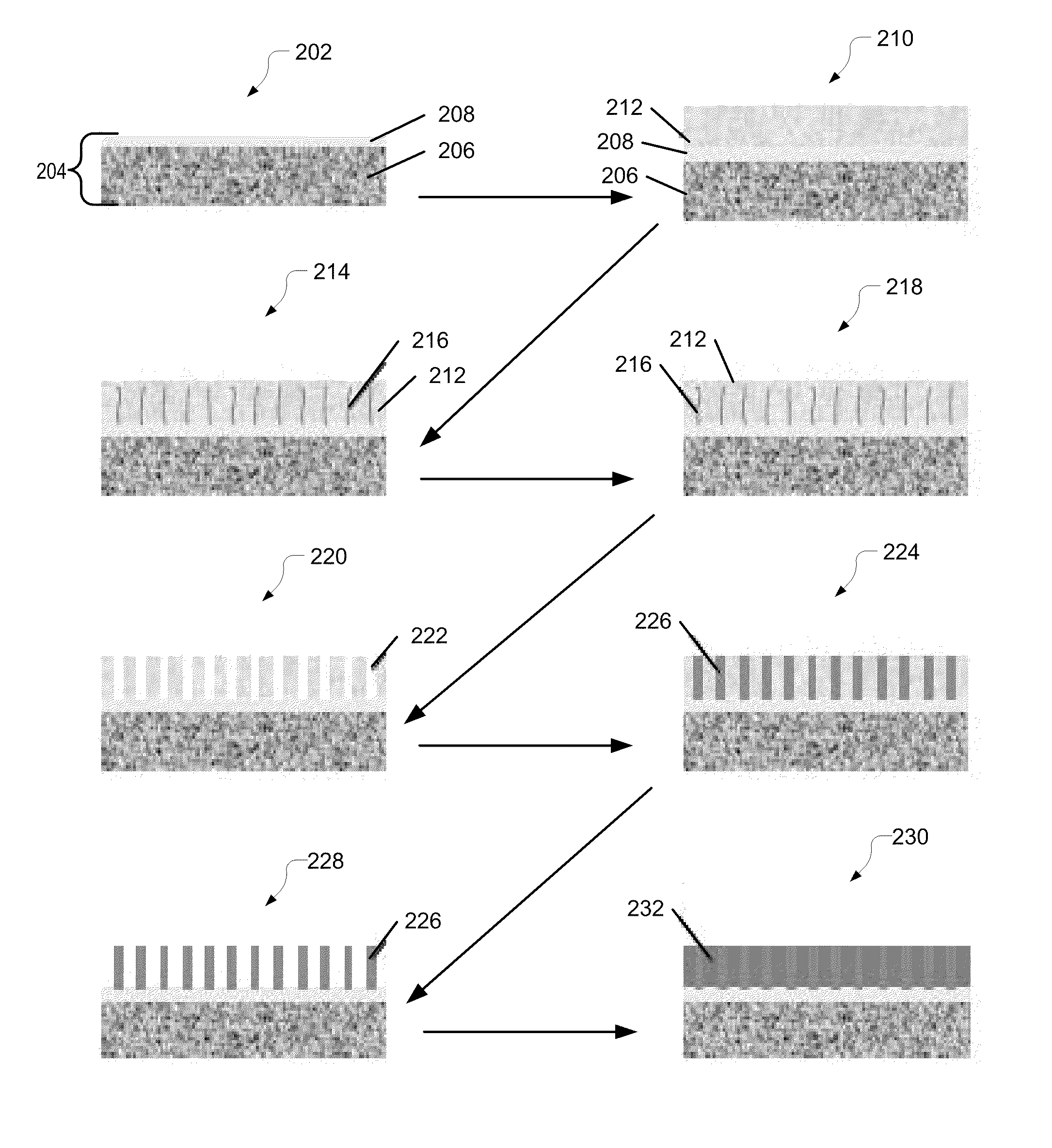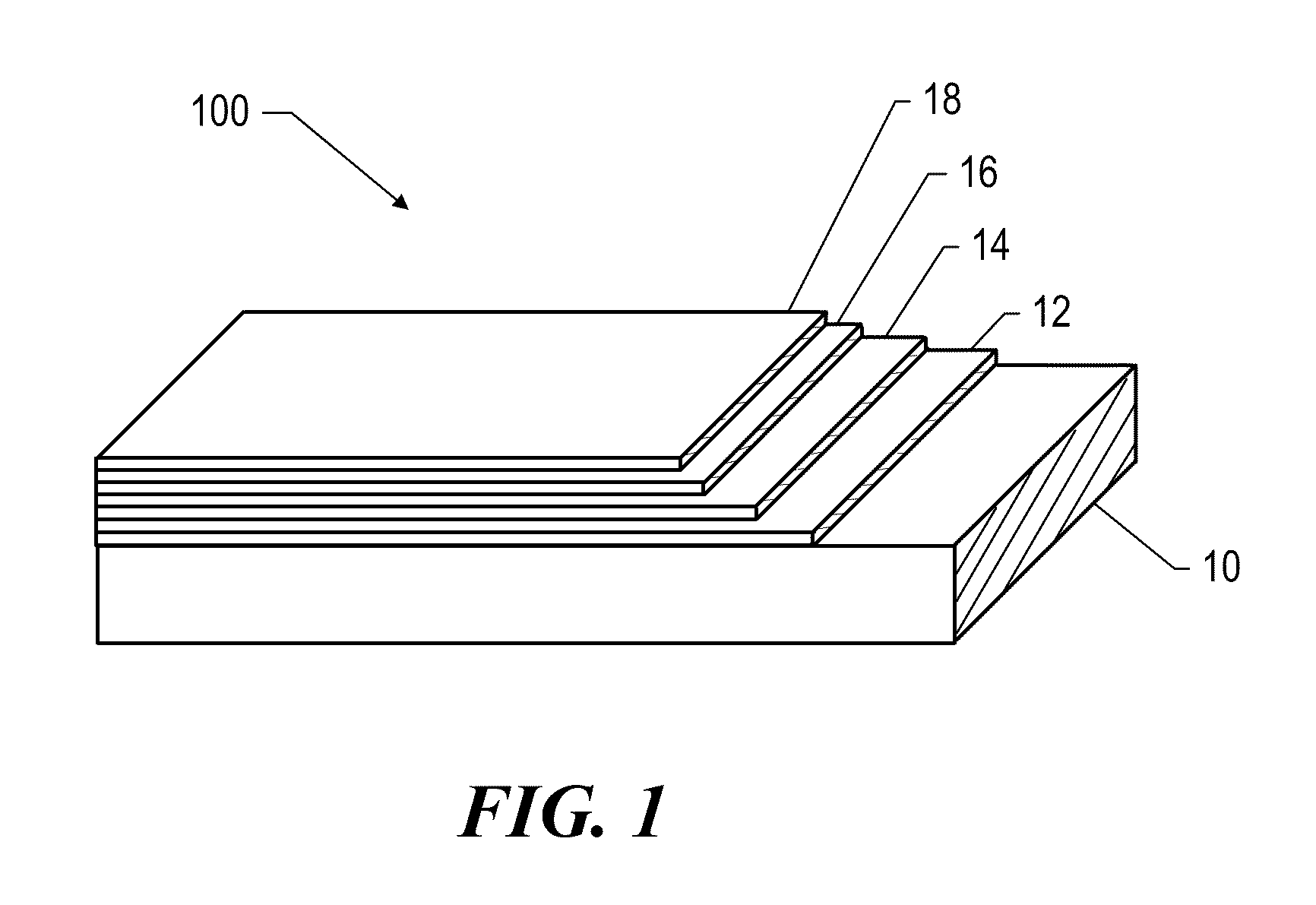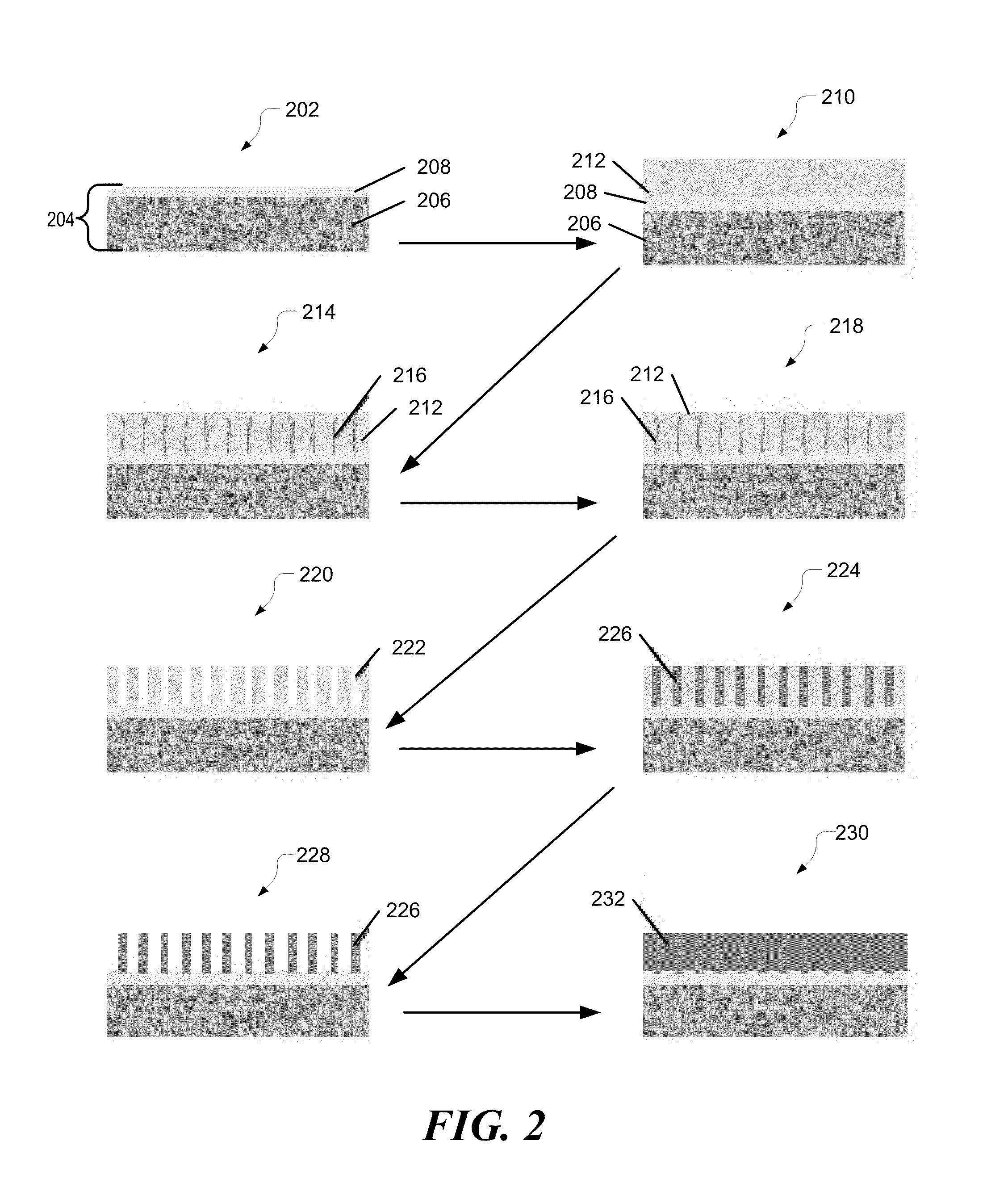Superconductive article with prefabricated nanostructure for improved flux pinning
a technology of nanostructure and superconducting article, which is applied in the direction of superconducting magnets/coils, magnetic bodies, natural mineral layered products, etc., can solve the problems of tape significantly affecting the critical current, tape does not represent a widespread commercially feasible product, and continues to exis
- Summary
- Abstract
- Description
- Claims
- Application Information
AI Technical Summary
Benefits of technology
Problems solved by technology
Method used
Image
Examples
second embodiment
[0041]In a second embodiment, nanorods can be formed using a nanoporous template. FIG. 4 illustrates an exemplary process of using nanoporous templates to form a prefabricated nanostructure with the HTS layer. At 402, a substrate 404 and a buffer layer 406 are provided. Additionally, an aluminum layer 408 is deposited overtop the buffer layer 406. For example, the aluminum layer can be deposited by sputtering or thermal evaporation. At 410, an anodic oxidation process can convert the aluminum layer 408 into an anodized aluminum oxide layer 412 including a highly ordered array of nanopores 414. At 416, metal, such as nickel or gold, can be electrodeposited within the nanopores 414 forming nanorods 418. At 420, the aluminum oxide layer 412 is removed by etching, leaving the nanorods 418 attached to the buffer layer 406. At 424, HTS material can be deposited to form an HTS layer 426 surrounding the nanorods 418. The HTS material can be deposited using one of the various techniques know...
third embodiment
[0043]In a third embodiment, chemical vapor deposition or chemical solution deposition can be used to form nanorods on predefined nucleation sites. For example, a nanodot array using materials such as colloidal gold particles or similar material can be deposited on the buffer surface as a nucleation site for the nanorods. Vapor-solid-liquid phase growth can be employed to grow the nanorods using the nanodots as a nucleation site. For example, ZnO can be mixed with graphite and vaporized. The vaporized material can be deposited on the nanodot templates. The spacing and density of the nanorods can depend on the spacing and density of the nanodots. The diameter and length of the nanorods can depend on the vaporization temperature and time and the deposition temperature and time. Other materials such as magnetic oxides can be used to form the nanorods that could lead to ferromagnetic pinning. Further, HTS material can be deposited around the nanorods to form an HTS layer embedding the n...
PUM
| Property | Measurement | Unit |
|---|---|---|
| diameter | aaaaa | aaaaa |
| diameter | aaaaa | aaaaa |
| height | aaaaa | aaaaa |
Abstract
Description
Claims
Application Information
 Login to View More
Login to View More - R&D
- Intellectual Property
- Life Sciences
- Materials
- Tech Scout
- Unparalleled Data Quality
- Higher Quality Content
- 60% Fewer Hallucinations
Browse by: Latest US Patents, China's latest patents, Technical Efficacy Thesaurus, Application Domain, Technology Topic, Popular Technical Reports.
© 2025 PatSnap. All rights reserved.Legal|Privacy policy|Modern Slavery Act Transparency Statement|Sitemap|About US| Contact US: help@patsnap.com



